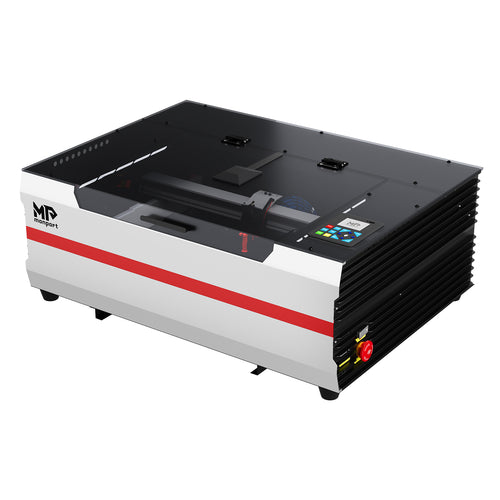Laser cutting is a popular and efficient method for cutting and engraving various materials. Monport laser cutters are known for their precision and reliability, but like any industrial laser engraver, they require proper ventilation to ensure optimal performance and safety.In this blog, we will discuss the importance of venting your Monport laser cutter, the best industrial air purifiers for smoke, dust, and other contaminants, and the necessary exhaust accessories for a well-ventilated workspace.
Key features of a high-quality CO2 laser cutter ventilation system
A great CO2 laser cutter should have an efficient ventilation system that effectively removes smoke, fumes, and dust generated during the cutting process. This ensures a clean and safe working environment, as well as maintaining the performance and longevity of the machine. Key features of a high-quality CO2 laser cutter ventilation system include:
Adequate airflow capacity: The ventilation system should have sufficient airflow capacity to handle the volume of smoke and fumes generated during laser cutting operations. This capacity is typically measured in cubic feet per minute (CFM)/.
Proper pressure: The ventilation system should maintain adequate pressure to ensure effective removal of contaminants. Pressure specifications are typically given in inches of water or static pressure.
High-quality filtration: A good ventilation system should include high-quality filters to capture airborne particles and odors. This may involve HEPA filters for particulates and activated carbon filters for odors.
Easy maintenance: The ventilation system should be easy to maintain, with accessible filters for regular cleaning or replacement as needed.
Quiet operation: A well-designed ventilation system should operate with minimal noise, ensuring a comfortable working environment.
In summary, a great CO2 laser cutter should have a ventilation system with adequate airflow capacity, proper pressure, high-quality filtration, easy maintenance, and quiet operation to ensure a clean and safe working environment.
What is the best way to vent a laser cutter?
The best way to vent a laser cutter involves setting up a proper exhaust system that effectively removes smoke, fumes, and dust generated during the cutting process. This ensures a clean and safe working environment and maintains the performance and longevity of the machine.
According to a guide on how to set up a laser cutter exhaust system, it is crucial to have a working exhaust system for your health and that of your laser engraving machine. This prevents potentially harmful particles from entering the air you breathe and helps remove debris that gathers in the machine.
When venting the exhaust outdoors, choose an exhaust location where it will not cause a public nuisance and maintain a safe distance from property lines, operable openings into buildings (e.g., windows, doors, air intakes), exterior walls and roofs, and adjoining grade.
Configuring your exhaust system starts with consulting your laser manufacturer's manual to determine the airflow and pressure needed. These specifications are given in cubic feet per minute (CFM) for airflow and in inches of water or static pressure for pressure.
A common method for air filtration is to use a pre-filter, an activated carbon filter, and a HEPA filter. This ensures that any unsafe particulates are caught in the filter, and the air will be much safer to breathe. You can either apply the filter to your laser cutter's exhaust or duct the air into a fume coffin.
Do you need to vent a fiber laser?
Yes, you do need to vent a fiber laser. Proper ventilation is essential to ensure a safe working environment, as fiber lasers can generate fumes and particulates during operation. Ventilation helps remove potentially harmful particles from the air and prevents them from accumulating in the machine.
It is important to have proper ventilation for any laser cutting operation, regardless of the material being cut. To ensure the safety of your workspace, it is advised to use a local ventilation system or an exhaust system designed specifically for industrial laser engraver applications.











